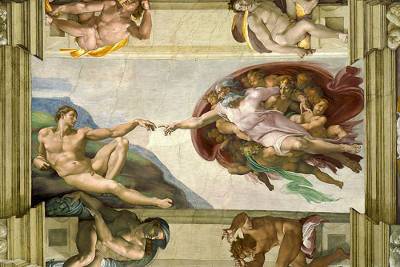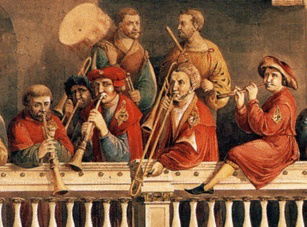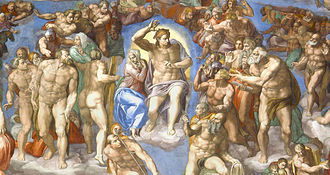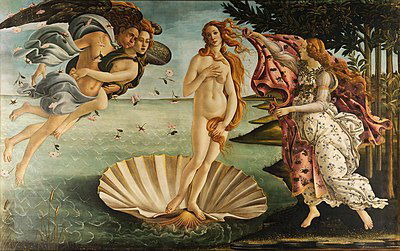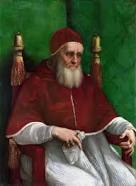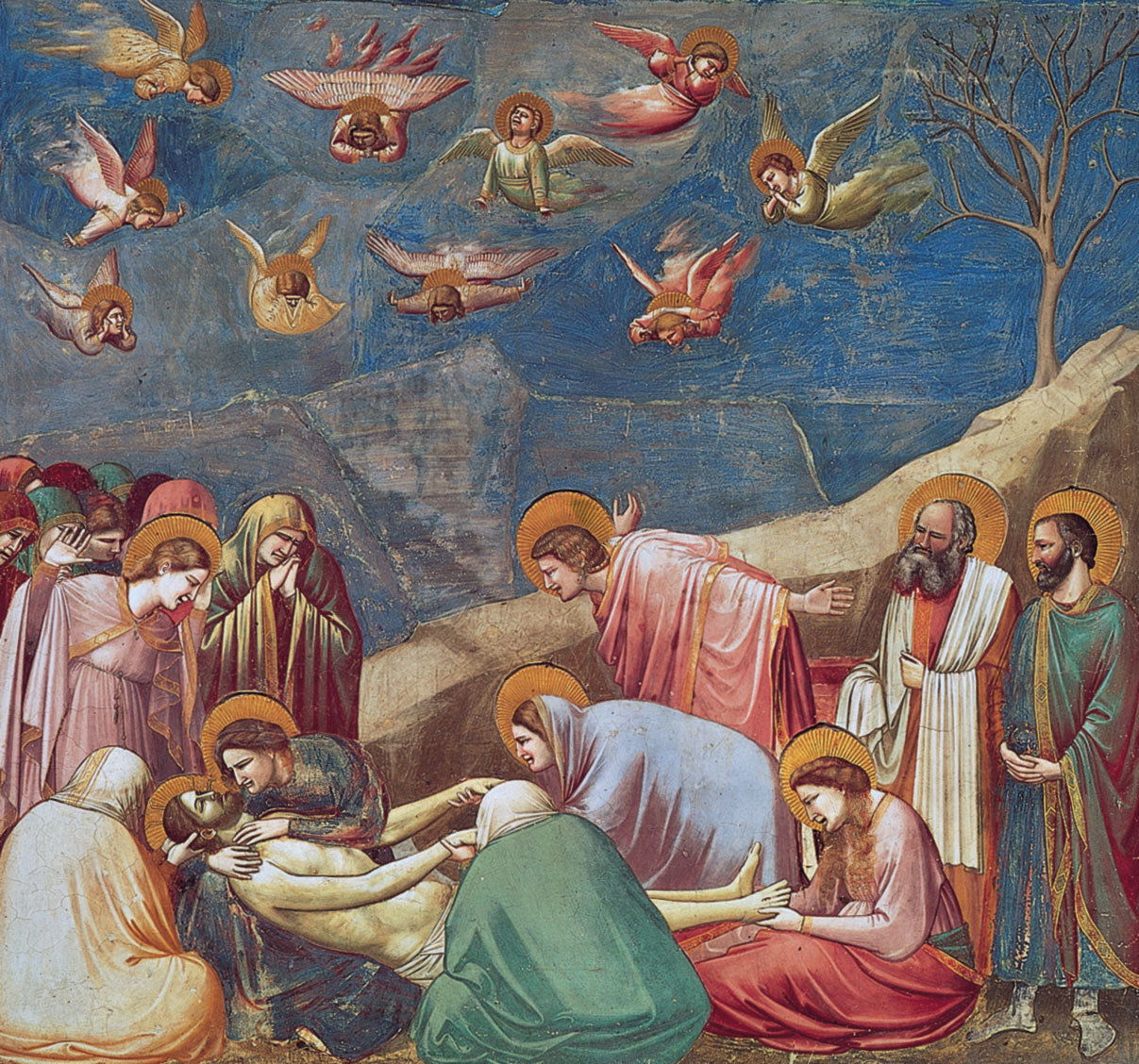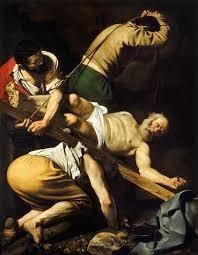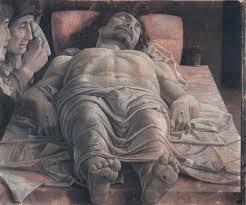Religion in the Renaissance
Navi Kahlon
CHY4U0 - A
Mr. Collings
March 12, 2020
Goals
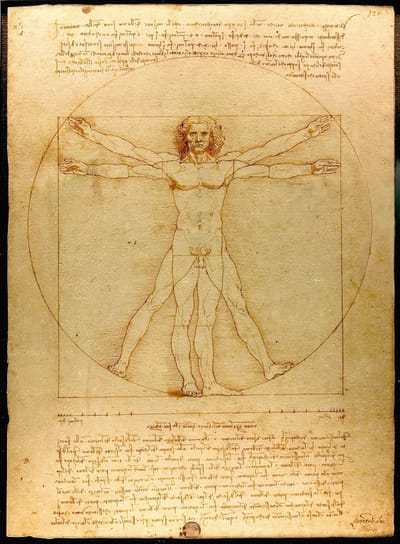
Introduction
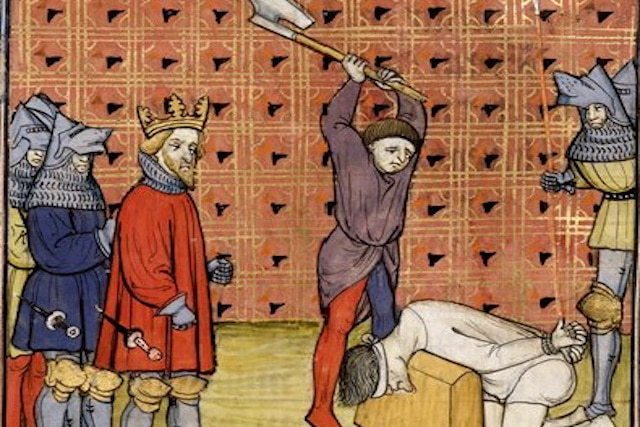
The Middle Ages was the period in Europe after the fall of Rome, occurring from the fifth to the fifteenth century; the Middle Ages coincided with the beginning of the Renaissance in the fifteenth century. In the Middle Ages, the societal structure was centred around hierarchy; there were serfs, merchants, knights, noblemen, and royalty, among the many roles in society. The Catholic Church had immense power among people during the Middle Ages, considered to be the most powerful institution in Europe. The worldviews among those living during the Middle Ages revolved around God and spirituality; for example, many believed in the idea of a divine plan – this meant they believed the world was a product of God’s intelligence. Many during the Middle Ages, would look for allegories in texts, in order to find relations to a higher purpose (God); texts, literature, art, etc. were centred around religion.1 In many art pieces, the figures were often depicted as looking very stiff, with serious faces; important figures were made much larger than those less important. Art in the Middle Ages looked very two-dimensional; importance to the human body and its detail were not significant; there was not a large importance for the concept of perception, light and shading, depth or form, either. Many art pieces were also centred around Biblical scenes. Architecture in the Middle Ages was Romanesque, similar to the Renaissance period.2 Gothic Architecture was also extremely popular during the Middle Ages. During this time period, religion was important in life, the political structure of Europe was very different to the modern world, as was the entertainment available during that time period; the rebirth of society, known as the Renaissance, was focused on humanism, however, elements of religion were still largely found in art, politics and entertainment, even if they had changed from the Middle Ages period.
Within this website, the relationship between religion and the arts, entertainment and politics will be explored; Religion was still a very dominating force in the Renaissance age, which occurred from the fourteenth to seventeenth century; however, the exploration of how religion still maintained its presence or lost its domination in the three subtopics will be further examined.
-------------------------------------------------------------------------------------------------------------------------------------------------------------------------------------------------
1 James, Usha, Jennifer Watt, Tom Cohen, and Michael Butler. Legacy: The West and the World. Toronto: McGraw-Hill Ryerson, 2003.
2 “Middle Ages.” History.com. A&E Television Networks, April 22, 2010. https://www.history.com/topics/middle-ages/middle-ages.
Religion & Art
The Renaissance introduced a new concept on how the world is viewed; humanism. Humanism is the system of thought in which humans are given more importance than supernatural figures; the concept of religion and belief in God was still widely prevalent within Renaissance society, however, with the many scientific and artistic revolutions that took place in this time period, it encouraged people to change their mindset towards their beliefs. The depiction of God and other holy figures were given "human" elements in many Renaissance-period works, vastly different from how Middle Age artwork depicted Biblical figures. Artwork began returning to classic Greek and Roman virtues during the Renaissance, and art changed from having very two-dimensional, stiff figures, to delicately drawing an accurate representation of a human body, with facial expressions, realistic perceptions and realistic lighting.
Art in the Renaissance was less Biblical based, but still incredibly relevant to the Church; "Art and religion began to modernize together under the veil of Christian Humanism”.3 Biblical work in the Renaissance period include, but are not limited to: The Last Judgment, The Crucifixion of St. Peter, and the Sistine Chapel ceiling by Michelangelo; The Last Supper by Leonardo da Vinci; and The Lamentation over Dead Christ by Andrea Mantegna. These works contained significant religious connotations, showing that religion still had a large presence in creative work, but many of these works embedded the ideas and modernized concepts of humanism, which flourished during the Renaissance age. In regards to religious symbolism in Renaissance paintings, Raphael’s The School of Athens perfectly captures the new blend of humanism and relationship of religion in artwork; “Raphael sought to create an arena in which the humanism of the Romans and Greeks could coexist with the ideology of the Catholic Church”.4 The Renaissance allowed for the continuation of strong religious beliefs, but allowed for the fruition of the concept of humanism, blending both ideologies together, often being shown in artwork. Leonardo da Vinci, the artist behind The Last Supper, was able to show humanism in artwork, with extremely strong religious undertones; The Last Supper was a Biblical painting and da Vinci ensured it “[imbued] each character with humanity reminiscent of the ideals of Christian humanism”.5 The Renaissance period had a multitude of examples showing the relationship between religion and artwork, incorporating a newly adopted concept of humanism; “In late medieval and Renaissance Italy, theologians continually emphasized the humanity of Christ”.6 da Vinci’s The Last Supper humanized Jesus Christ, by providing him with feelings and emotions in the painting, but still staying true to how religion portrays Christ, giving him a halo to show how he is a higher power.
Religion and art in the Renaissance went hand-in-hand together; the Renaissance was a true period of time in which art became highly appreciated, and artists such as Leonardo da Vinci, Raphael and Michelangelo’s works effortlessly portrayed the relationship between the appreciation of religion and art, which contained the new Renaissance-worldview of humanism.
-------------------------------------------------------------------------------------------------------------------------------------------------------------------------------------------------
3 “Faith, Imagined.” Columbia University, 2017. (accessed March 3, 2020),
http://blogs.cuit.columbia.edu/maf2219/the-italian-renaissance-2/.
4 Ibid.
5 Ibid.
6 Sorabella, Jean. “Painting the Life of Christ in Medieval and Renaissance Italy.” The Metropolitan Museum of Art, June 2008. (accessed March 7, 2020), https://www.metmuseum.org/toah/hd/chri/hd_chri.htm.
Leonardo da Vinci
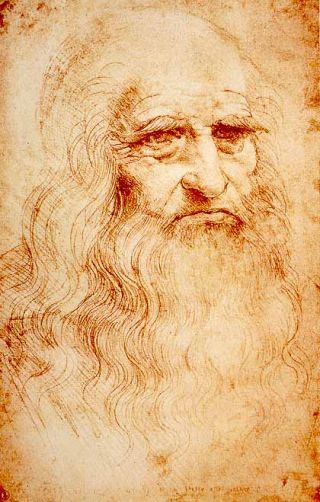 Leonardo da Vinci's self portraitLeonardo da Vinci is most notably known for being a “total Renaissance man”, who was able to use his gift of art to capture the beauty of Biblical figures, while applying newer painting techniques to make his creations seem realistic and emotional. Despite da Vinci’s close relationship with painting religious photos, da Vinci himself was considered to be “agnostic at most”.7 Despite his personal beliefs regarding God and a higher entity, he cultivated artwork that captured holy figures, whilst applying humanity to their emotions and depictions; da Vinci “created moving and theologically profound images that reflect a deep understanding of the Christian faith…[he] stamped an indelible impression on the Christian tradition, shaping the way we think about certain subjects and biblical events today…in a society that [is] essentially Christian, as Renaissance Italy was”.8
Leonardo da Vinci's self portraitLeonardo da Vinci is most notably known for being a “total Renaissance man”, who was able to use his gift of art to capture the beauty of Biblical figures, while applying newer painting techniques to make his creations seem realistic and emotional. Despite da Vinci’s close relationship with painting religious photos, da Vinci himself was considered to be “agnostic at most”.7 Despite his personal beliefs regarding God and a higher entity, he cultivated artwork that captured holy figures, whilst applying humanity to their emotions and depictions; da Vinci “created moving and theologically profound images that reflect a deep understanding of the Christian faith…[he] stamped an indelible impression on the Christian tradition, shaping the way we think about certain subjects and biblical events today…in a society that [is] essentially Christian, as Renaissance Italy was”.8
------------------------------------------------------------------------------------------------------------------------------------------------------------------------------------------------------
7 Smith, Rachel. "A Renaissance gallery: five artists who captured the imagination of the church."
Christian History and Biography, Summer 2006, 37+. Gale OneFile: Religion and Philosophy, (accessed February 25,
2020). https://link.gale.com/apps/doc/A255656258/PPRP?u=miss91533&sid=PPRP&xid=e48fe8e9.
8 Ibid.
Michelangelo
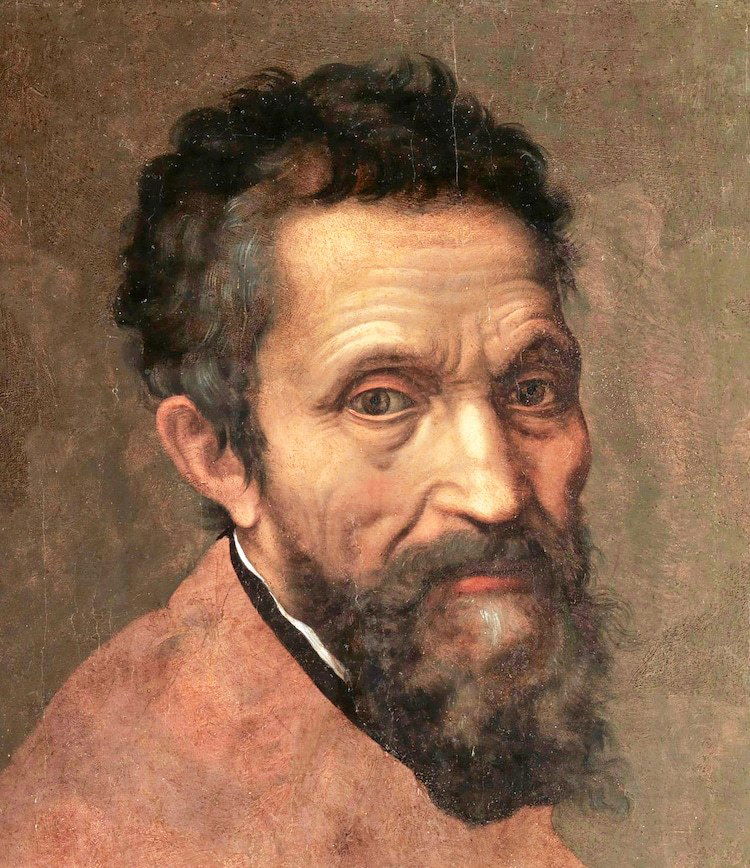
Michelangelo was very religious, in comparison to Leonardo da Vinci. Michelangelo saw art as “the embodiment of virtue and reason, the reflection of judgment, [and] the distillation of wisdom”.9 Michelangelo’s passion for art, combined with his religious views, helped inspire him to create some of the most iconic pieces of Renaissance history ever.
------------------------------------------------------------------------------------------------------------------------------------------------------------------------------------------------------
9 Barolsky, Paul. Michelangelo's Nose: A Myth and Its Maker. Pennsylvania: Pennsylvania State University Press, 1990, (accessed March 9, 2020). https://books.google.ca/books?hl=en&lr=&id=KwM03ken-S4C&oi=fnd&pg=PR14&dq=michelangelo%27s+religion&ots=Ef_qvdK3uM&sig=BWf1qcLDrJQzJQjKaQQFbJk8efE#v=onepage&q=michelangelo's%20religion&f=false
Raphael
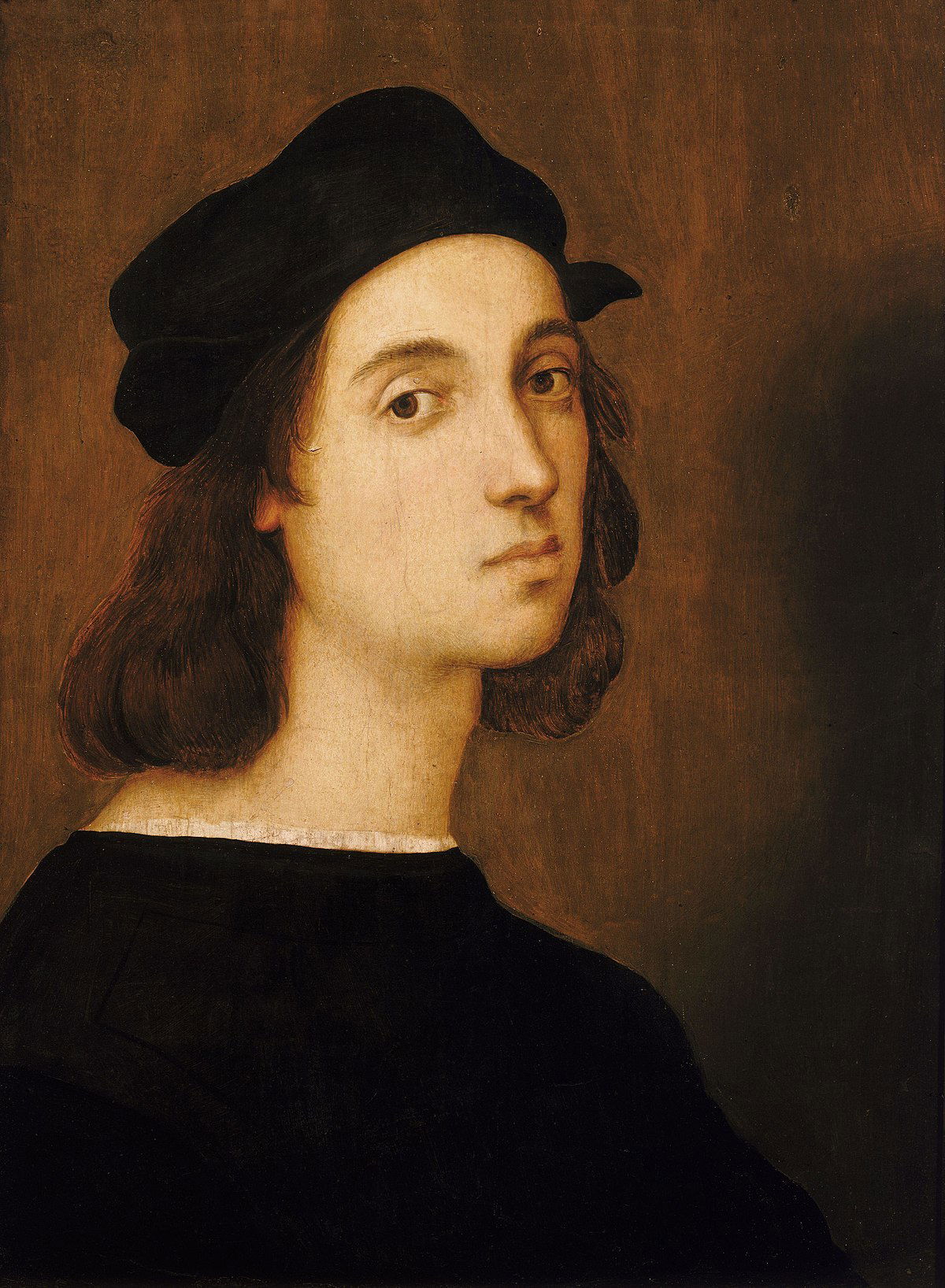
Raphael Sanzio da Urbino was born into a Catholic family; he was very religious, incorporating his faith in many of his famous works, including The Sistine Madonna. He was chosen to work on the basilica of St. Peter’s.10 Raphael placed importance on religion in his artwork, however, one of his most iconic pieces, The School of Athens, placed in the Apostolic Palace in the Vatican, depicts many Greek figures who believed in science, technology and philosophy, which effectively showed the combination of humanism and religion in Renaissance-era art.
------------------------------------------------------------------------------------------------------------------------------------------------------------------------------------------------------
10 Alkholy, Inas. The Presence of Secular Books In Raphael’s Fresco: The School of Athens, 2006. (accessed March 9, 2020).
https://s3.amazonaws.com/academia.edu.documents/37788661/1-Raphael-Image_of_Book.pdf?response-content-disposition=inline%3B%20filename%3DThe_Presence_of_Secular_Books_In_Raphael.pdf&X-Amz-Algorithm=AWS4-HMAC-SHA256&X-Amz-Credential=AKIAIWOWYYGZ2Y53UL3A%2F20200318%2Fus-east-1%2Fs3%2Faws4_request&X-Amz-Date=20200318T085933Z&X-Amz-Expires=3600&X-Amz-SignedHeaders=host&X-Amz-Signature=5b787d8c2bb31bf893609198ae7b293515935fd8a008b3a26b499f1d1baf4ac0
Religion & Politics
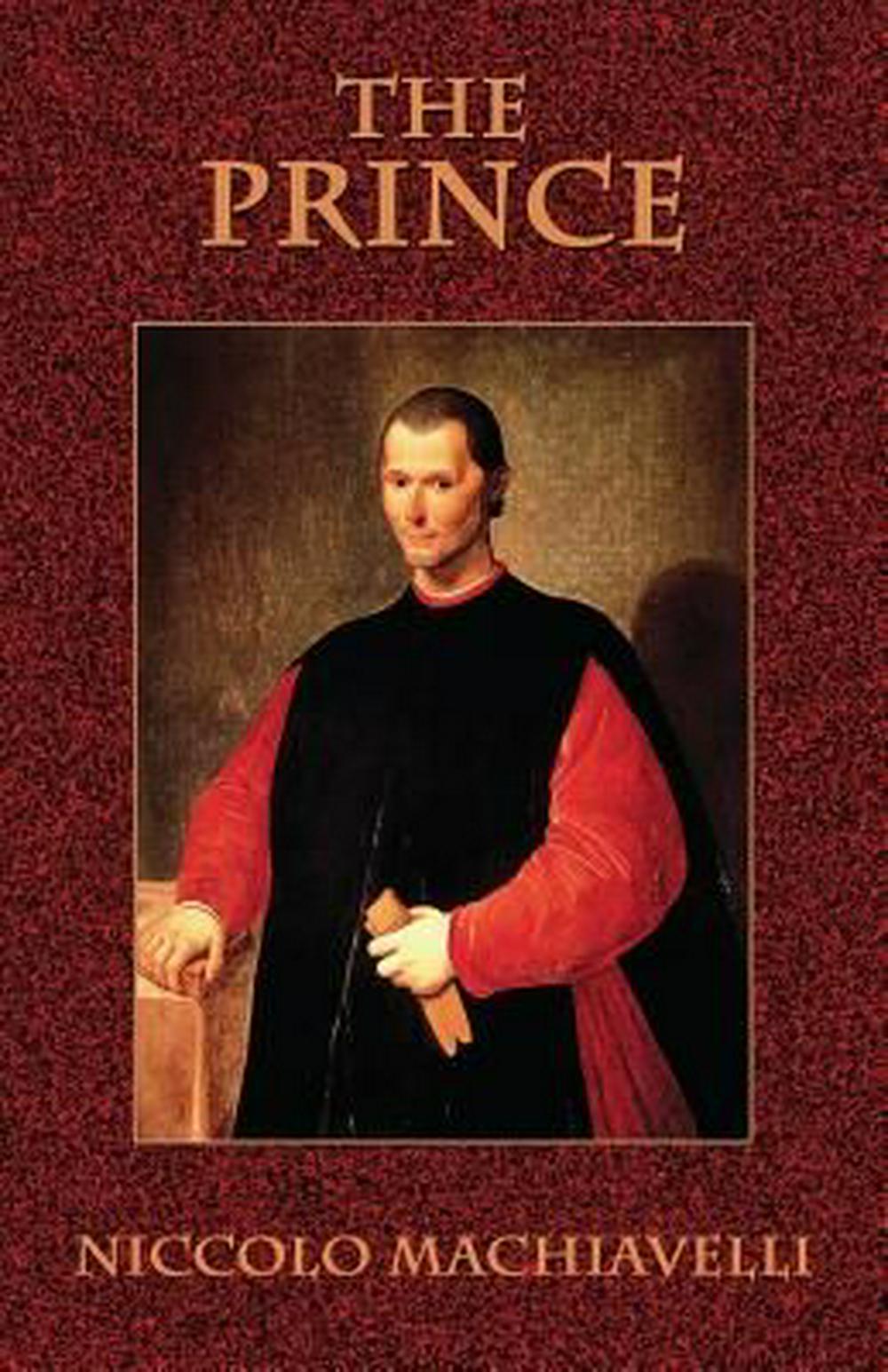
The Renaissance was a time period that experienced a multitude of change; from religious reformations to political changes, the Renaissance period truly was a time of rebirth for Europe. Religious reformation was seen massively in England’s political system; King Henry VIII was born a Catholic, but his desire for a male heir prompted him to divorce his first wife, requiring a split from the Pope. The Act of Supremacy, passed in 1534, separated the King and Pope’s positions in England; an oath was required to solidify Henry’s relationship with his second wife, Anne Boleyn, so it was seen as legitimate. England's monarchs continuously shifted the religions they practiced post-Henry VIII's reign of power, impacting politics.11 Political power in Italy, specifically Florence and Tuscany, consisted of being controlled by a wealthy merchant family, the Medici’s, for a very long time in the Renaissance. The Medici’s wanted to have wise citizens, ensuring they knew the importance of learning and literature, known as philology. The Medici’s also commissioned several artists to do work in Italy, many of which had religious undertones.12 A famous political figure, Niccolò Machiavelli, lost all his political power in Florence, when said Medici family took over again in the 1510s. Machiavelli wrote the famous Renaissance book, The Prince, which became important during the Reformation. Machiavelli and his relation to politics, and its subsequent relation to religion, is displayed through his “uses [of] biblical, pagan, and Christian forms of religious symbols”.13 Machiavelli’s “teaching (‘new ways and methods’) is compared to Christ’s message”.14 Religion and inspiration from religion was still prominent among political figures and influences in the Renaissance, even as ideologies were changing. Religious figures, such as Pope Julius II, a political presence, often commissioned artists, such as Michelangelo, to work on the Sistine Chapel, and other religious buildings; they blended religion, politics and art together.15 Religion in politics experienced a large change during the Renaissance; while politics was still largely oriented around religion in many European countries, humanist views and the appreciation for science, technology and philosophy began slowly breaking away the incessant need for religion in law in other countries. The “largest political changes during that period [was] the segregation of politics from Christianity. Religion was no longer seen as part of governance and authority. Government and politics were affected by humanism”.16
-------------------------------------------------------------------------------------------------------------------------------------------------------------------------------------------------
11 Bernard, G.W. “The King’s Reformation: Henry VIII and the Remaking of the English Church.” New Haven: Yale University Press, 2007, (accessed March 10, 2020). https://books.google.ca/books?hl=en&lr=&id=HOiXAhKkTNEC&oi=fnd&pg=PP11&dq=act+of+supremacy+henry+viii&ots=dtfnzYbUcM&sig=WkRW34UPfx7QdJUr90APUxFXo94#v=onepage&q=act%20of%20supremacy%20henry%20viii&f=false
12 The School of Life, “HISTORY OF IDEAS – The Renaissance.” YouTube Video, 17:44. November 6, 2015, (accessed March 6, 2020). https://www.youtube.com/watch?v=fI1OeMmwYjU
13 Fontana, Benedetto. “Love of Country and Love of God: The Political Uses of Religion in Machiavelli.” University of Pennsylvania Press, 1999, (accessed March 10, 2020). https://www.jstor.org/stable/3654112?read-now=1&seq=3#page_scan_tab_contents
14 Ibid.
15 Withnell, Stephen. “The Staggering Artistic Legacy of Pope Julius II.” Catholic Herald, February 14, 2020. https://catholicherald.co.uk/the-staggering-artistic-legacy-of-pope-julius-ii/.
16 Hood, Sherrie. “Renaissance and Political System.” Arts Columbia, September 13, 2018. https://artscolumbia.org/art-history/post-classical/renaissance/renaissance-and-political-system-20684/.
Religion & Entertainment
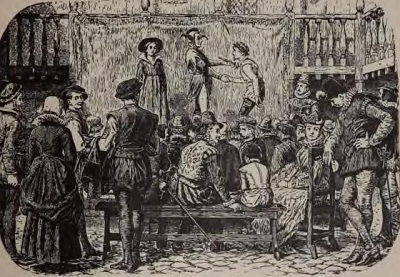 A drawing of a performance of one of Shakespeare's plays during the RenaissanceChurch was an important element in people’s lives during the Renaissance; entertainment, such as music, was incorporated into the church. Patronage, which was support, financial aid and encouragement that kings, popes and the wealthy provided to artists, was “broadened to include the Catholic Church [and] Protestant churches and courts…all were sources of income for composers”.17 Religious festivals were also a large source of entertainment for people in Europe, during the Renaissance-era; there were Catholic and Protestant festivals for various holidays, some of which included: Christmas, Easter, and Lent. In Venice, Italy, there were many large, elaborate festivals which many people took part of; “Venetian pageants and rituals honoured Church feasts, especially those of Holy Week and Easter”.18 Another source of entertainment was literature or plays; some of the most famous Renaissance-era plays came from William Shakespeare. In many of Shakespeare’s plays, he has religious symbolism or connotations within his texts; Hamlet refers to the deeply divided Europe in the sixteenth century, regarding religion. Shakespeare’s The Tempest and Measure for Measure, also have some religious backgrounds in their texts.19 Religion was embedded in Renaissance society, especially regarding entertainment; through music, plays, and festivals, many of them had religious undertones or were done for religious reasons.
A drawing of a performance of one of Shakespeare's plays during the RenaissanceChurch was an important element in people’s lives during the Renaissance; entertainment, such as music, was incorporated into the church. Patronage, which was support, financial aid and encouragement that kings, popes and the wealthy provided to artists, was “broadened to include the Catholic Church [and] Protestant churches and courts…all were sources of income for composers”.17 Religious festivals were also a large source of entertainment for people in Europe, during the Renaissance-era; there were Catholic and Protestant festivals for various holidays, some of which included: Christmas, Easter, and Lent. In Venice, Italy, there were many large, elaborate festivals which many people took part of; “Venetian pageants and rituals honoured Church feasts, especially those of Holy Week and Easter”.18 Another source of entertainment was literature or plays; some of the most famous Renaissance-era plays came from William Shakespeare. In many of Shakespeare’s plays, he has religious symbolism or connotations within his texts; Hamlet refers to the deeply divided Europe in the sixteenth century, regarding religion. Shakespeare’s The Tempest and Measure for Measure, also have some religious backgrounds in their texts.19 Religion was embedded in Renaissance society, especially regarding entertainment; through music, plays, and festivals, many of them had religious undertones or were done for religious reasons.
------------------------------------------------------------------------------------------------------------------------------------------------------------------------------------------------------
17 Arkenberg, Rebecca. “Music in the Renaissance.” Met Museum, October 2002. https://www.metmuseum.org/toah/hd/renm/hd_renm.htm.
18 Mulryne, J.R. “Festivals in Italy.” The British Library, March 31, 2005. https://www.bl.uk/treasures/festivalbooks/italy.html
19 Cummings, Brian. “The Reformation in Shakespeare.” The British Library, March 15, 2016. https://www.bl.uk/shakespeare/articles/the-reformation-in-shakespeare.
Conclusion
Moreover, religion was an essential part of life in the Middle Ages, but with the emergence of humanism and other revolutions in technology and science, it changed in many ways during the Renaissance, impacting a multitude of different things, including: arts, politics and entertainment. The relationship between religion and art in Renaissance was shown to still be very strong, with artists such as Leonardo da Vinci, Raphael and Michelangelo creating religious works, insinuating that the appreciation for God and Church was still present, whilst incorporating the newfound ideas of humanism into their pieces; the relationship between religion and politics was evidently present in England's split from the Pope, the religious reformations that occurred throughout Europe, the slow stray from religion and law, and the ideologies that many public, political figures, such as Niccolo Machiavelli, presented, with certain principles' of Machiavelli's being compared to that of religious figures such as Christ; finally, the relationship between religion and entertainment was also displayed in the Renaissance period in Europe, via the Venetian religious festivals that took place, the newfound love and appreciation of music that many religious institutes incorporated into their programs, the celebrations of religious festivals and holidays beloved by many in Europe, and the love of watching theatre, which incorporated elements of religion, in many countries, including England. Despite newer ideologies being presented in the Renaissance-era, there was always a link to religion, even if it had lessened than the previous time period. The Renaissance was not just a rebirth of Europe and religion, it was a time that helped establish and carve many of the modernist ideologies we carry today.
Reference List
Alkholy, Inas. The Presence of Secular Books In Raphael’s Fresco: The School of Athens, 2006.
(accessed March 9, 2020).
https://s3.amazonaws.com/academia.edu.documents/37788661/1-Raphael-
Image_of_Book.pdf?response-content-disposition=inline%3B%20filename%3DThe
_Presence_of_Secular_Books_In_Raphael.pdf&X-Amz-Algorithm=AWS4-HMAC-
SHA256&X-Amz-Credential=AKIAIWOWYYGZ2Y53UL3A%2F20200318%2Fus-
east-1%2Fs3%2Faws4_request&X-Amz-Date=20200318T08593
3Z&X-Amz-Expires=3600&X-Amz-SignedHeaders=host&X-Amz-
Signature=5b787d8c2bb31bf893609198ae7b293515935fd8a008b3a26b499f1d1baf4ac0
Arkenberg, Rebecca. “Music in the Renaissance.” Met Museum, October 2002.
https://www.metmuseum.org/toah/hd/renm/hd_renm.htm.
Barolsky, Paul. Michelangelo's Nose: A Myth and Its Maker. Pennsylvania: Pennsylvania State
University Press, 1990, (accessed March 9, 2020).
https://books.google.ca/books?hl=en&lr=&id=KwM03kenS4C&oi=fnd&pg=PR14&
dq=michelangelo%27s+religion&ots=Ef_qvdK3uM&sig=BWf1qcLDrJQzJQjKaQQFbJk
8efE#v=onepage&q=michelangelo's%20religion&f=false
Bernard, G.W. “The King’s Reformation: Henry VIII and the Remaking of the English Church.”
New Haven: Yale University Press, 2007, (accessed March 10, 2020).
Cummings, Brian. “The Reformation in Shakespeare.” The British Library, March 15, 2016.
https://www.bl.uk/shakespeare/articles/the-reformation-in-shakespeare.
“Faith, Imagined.” Columbia University, 2017. (accessed March 3, 2020),
http://blogs.cuit.columbia.edu/maf2219/the-italian-renaissance-2/.
Fontana, Benedetto. “Love of Country and Love of God: The Political Uses of Religion in
Machiavelli.” University of Pennsylvania Press, 1999, (accessed March 10, 2020).
https://www.jstor.org/stable/3654112?read-now=1&seq=3#page_scan_tab_contents
Hood, Sherrie. “Renaissance and Political System.” Arts Columbia, September 13, 2018.
https://artscolumbia.org/art-history/post-classical/renaissance/renaissance-and-political-
system-20684/.
James, Usha, Jennifer Watt, Tom Cohen, and Michael Butler. Legacy: The West and the World.
Toronto: McGraw-Hill Ryerson, 2003.
“Middle Ages.” History.com. A&E Television Networks, April 22, 2010.
https://www.history.com/topics/middle-ages/middle-ages.
Mulryne, J.R. “Festivals in Italy.” The British Library, March 31, 2005.
https://www.bl.uk/treasures/festivalbooks/italy.html
Smith, Rachel. "A Renaissance gallery: five artists who captured the imagination of the church."
Christian History and Biography, Summer 2006, 37+. Gale OneFile: Religion and
Philosophy, (accessed February 25, 2020).
https://link.gale.com/apps/doc/A255656258/PPRP?u=miss91533&sid=PPRP&
xid=e48fe8e9.
Sorabella, Jean. “Painting the Life of Christ in Medieval and Renaissance Italy.” The
Metropolitan Museum of Art, June 2008. (accessed March 7, 2020),
https://www.metmuseum.org/toah/hd/chri/hd_chri.htm.
The School of Life, “HISTORY OF IDEAS – The Renaissance.” YouTube Video, 17:44.
November 6, 2015, (accessed March 6, 2020).
https://www.youtube.com/watch?v=fI1OeMmwYjU
Withnell, Stephen. “The Staggering Artistic Legacy of Pope Julius II.” Catholic Herald, February
14, 2020. https://catholicherald.co.uk/the-staggering-artistic-legacy-of-pope-julius-ii/.
